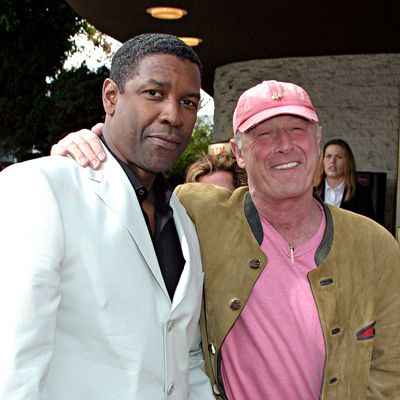
From this distance, itÔÇÖs impossible to know why the director Tony Scott ÔÇö recently diagnosed with an inoperable brain tumor ÔÇö would choose to end his life as he did, abandoning his car on the road and leaping from a Los Angeles bridge. But on the basis of his movies you can certainly infer that he wasnÔÇÖt a man who liked to sit still. To be plugged into a machine and confined to a bed ÔÇö to one angle on the world, one color palette, a handful of predictable light sources ÔÇö would have been hell for a director who came to define himself by his restless, peripatetic worldview. Which is not to discount the degree of pain that accompanies a terminal cancer.
He was the brother of Ridley, in whose shadow he labored from the start. It was Ridley, with his tony The Duellists, his viscerally explosive Alien, his dystopian Blade Runner, who was deemed the artist in the family, while Tony was the superficial, commercial craftsman. Both came from the world of advertising, but Tony was the one who seemed less concerned with the content of his films and more concerned with how that content would be lighted. Apart from a strain of homoeroticism, is there a thematic connection between The Hunger and Top Gun? You knew it was a Tony Scott picture by the gauzy, gleaming mise-en-scene and the disconnectedness of the imagery. An early association with the frankly mercenary team of Don Simpson and Jerry Bruckheimer didnÔÇÖt win him many points ÔÇö except net ones at the box office.
With scripts like the ones for Crimson Tide and Quentin TarantinoÔÇÖs True Romance, Scott did a good job staying focused. (The former was also sold by two peerlessly edgy stars, Denzel Washington and Gene Hackman.) Yet I always sensed that Scott strongly preferred to be leaping all over the place. Fluidity, choreography, patterns of flux within the frame ÔÇö none of these interested him as much as fractured montage. In the last decade, Scott would use ten, twenty, even more cameras to shoot scenes from as many angles as possible, making his work harder or, depending on your perspective, easier in the editing room. (IÔÇÖd like to know if his editors saw a different side of him than others did.)
Admittedly, I wasnÔÇÖt especially kind to him or his Simpson-Bruckheimer (later just Bruckheimer) money jobs, many with Denzel Washington. (Scott was reportedly a gentleman, but stories abound of the sheer meanness of many of his colleagues.) In my review of Domino, I wrote:
Why film an action  say, the lighting of a cigarette  in one shot when you can do it in six? So you get match swipe, match flare, another angle (with a double exposure) on the flare, tip of cigarette burning, cigarette going between lips, character inhaling in close-up  And the film stock changes in each shot, one green, one black-and-white, one overexposed  And the sound of that flare is like a bomb going off  and the cigarette isnt even a big deal.
That said, many critics I respect came to see Tony Scott as far more adventurous and original than Ridley, championing Domino as well as two other ÔÇöto my mind appalling ÔÇö films with Washington, the remakes of Man on Fire and The Taking of Pelham 123. The latter struck me as especially ill-conceived. Here was a psychological duel between a gunman (John Travolta) holding hostages in a stopped subway car and a humble dispatcher (Washington) largely confined to his desk, and yet the cutting was frenetic and the camera whooshed around to little effect.
Once, though, I felt that ScottÔÇÖs hullaballoo meshed so perfectly with his script that I put the movie on my best-of-year list: Enemy of the State, in which Will Smith was tracked by the government with multiple satellites and surveillance cameras. The changing angles, unaccountable perspectives, and jittery cutting made the paranoia even frighteningly palpable. The film was not just a triumph but a trendsetter, and none of the many imitations ÔÇö┬á24, the Bourne pictures ÔÇö came close to the purity of its vision.
So, The Hunger (for swank), True Romance, Crimson Tide, Enemy of the State, and the recent hyped-up but hugely suspenseful Unstoppable┬áÔÇö pretty damned good for a director for whom I thought I had little use. Perhaps I underrated his verve, his bravura, his ability to make firm artistic choices and go with them. Although I know nothing of his final days and the anguish that must have accompanied them, I canÔÇÖt help wishing heÔÇÖd stuck around long enough to know how much so many film lovers had come to respect him.


